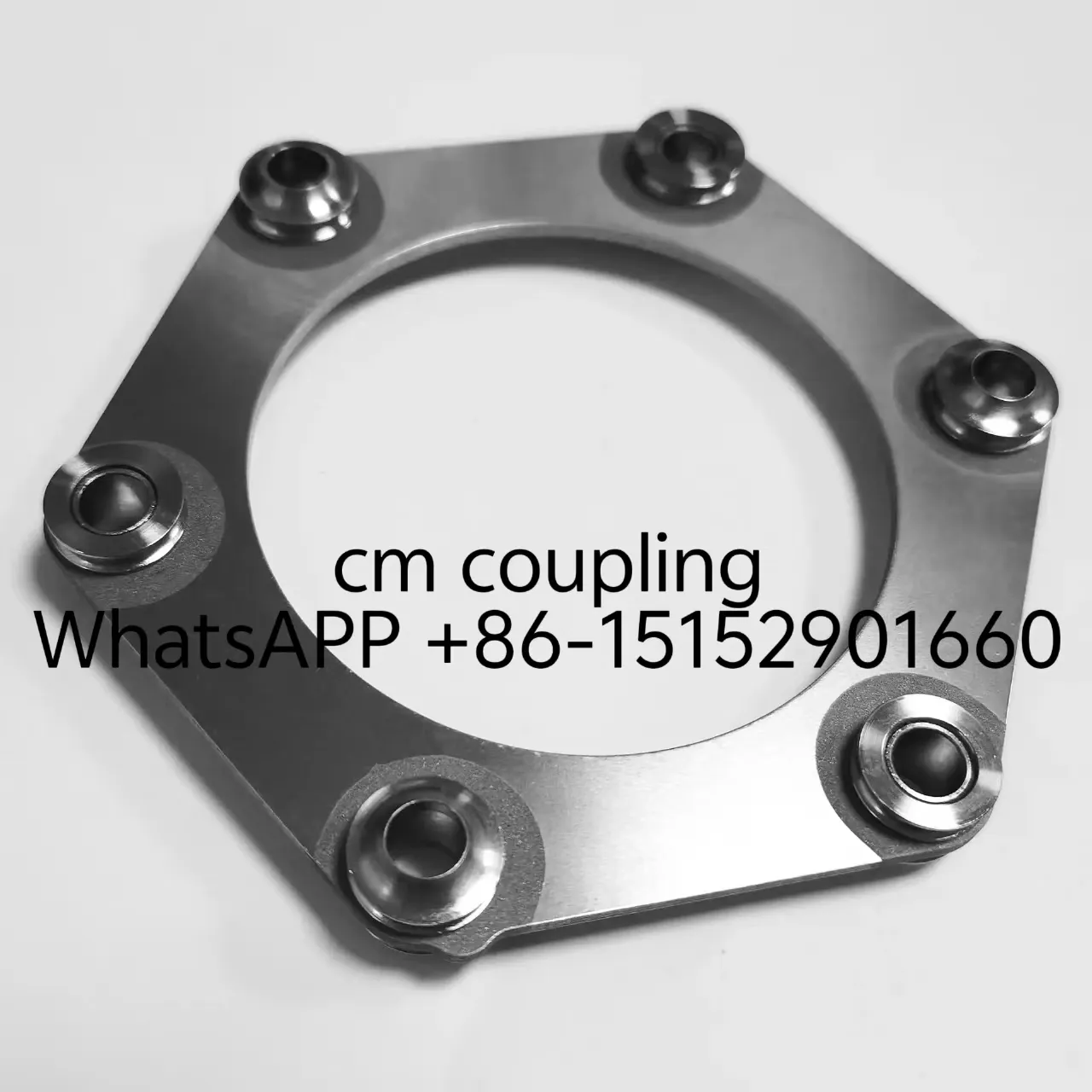Copyright © 2025 Chuangming Coupling (Jiangsu) Co.,Ltd.
Why is 301 high-elasticity stainless steel suitable for diaphragm couplings?
2025-10-10
The diaphragm is the "power transmission core" of a diaphragm coupling. It not only needs to stably transmit torque in equipment such as machine tool spindles and wind turbine gearboxes but also compensate for axial, radial, and angular offsets caused by installation errors or operational vibrations. Additionally, it must buffer shock loads. The material selection directly determines the transmission accuracy and service life of the coupling. 301 high-elasticity stainless steel, due to its high compatibility with the working characteristics of the diaphragm, has become the preferred material for this component. The specific reasons and advantages are as follows:
From the perspective of core material properties, high elasticity and high strength are the key. The diaphragm repeatedly undergoes alternating stress from "torque loading - unloading" during operation, as well as bending deformation caused by offsets. After cold working, the elastic limit of 301 stainless steel can reach over 1500 MPa, allowing it to quickly return to its original shape after each deformation and avoid increased transmission deviation due to plastic deformation. Its tensile strength is as high as 1300 MPa, far exceeding that of commonly used 304 stainless steel (about 520 MPa), ensuring it can withstand instantaneous high torque even in heavy-duty conditions such as metallurgical equipment and prevent sudden diaphragm fractures.
In application scenarios, corrosion and wear resistance are well-suited to complex environments. Diaphragm couplings are often used in machine tool workshops (with much oil and grease), wind turbine nacelles (with high humidity), and metallurgical plants (with much dust). 301 stainless steel contains 17% to 19% chromium, which forms a dense oxide film on the surface, effectively isolating oil, water vapor, and dust from erosion, preventing the diaphragm from thinning and strength reduction due to rust. After cold working, its surface hardness can reach HV300-400, reducing wear during high-frequency contact vibration with the coupling flange and extending the diaphragm's service life by more than three times compared to ordinary carbon steel.

The processing performance better meets the precision manufacturing requirements of the diaphragm. Diaphragms are often designed as thin, ring-shaped or disc-shaped structures, and some need evenly distributed bolt holes, with extremely high dimensional accuracy requirements (such as thickness tolerance controlled within ±0.02mm). 301 stainless steel has good cold stamping formability and can be quickly formed into complex shapes through precision stamping. During subsequent cutting processes, it is easy to break chips, reducing tool wear and ensuring the geometric accuracy of the diaphragm. Ultimately, the transmission deviation of the coupling can be controlled within 0.1mm, meeting the high-precision transmission requirements of high-end CNC machines and precision automation equipment.
In conclusion, the high elasticity, high strength, corrosion and wear resistance, and excellent processing performance of 301 high-elasticity stainless steel precisely match the working requirements of diaphragm couplings, providing reliable material assurance for their stable operation in complex working conditions across multiple industries.
The diaphragm is the "power transmission core" of a diaphragm coupling. It not only needs to stably transmit torque in equipment such as machine tool spindles and wind turbine gearboxes but also compensate for axial, radial, and angular offsets caused by installation errors or operational vibrations. Additionally, it must buffer shock loads. The material selection directly determines the transmission accuracy and service life of the coupling. 301 high-elasticity stainless steel, due to its high compatibility with the working characteristics of the diaphragm, has become the preferred material for this component. The specific reasons and advantages are as follows:
From the perspective of core material properties, high elasticity and high strength are the key. The diaphragm repeatedly undergoes alternating stress from "torque loading - unloading" during operation, as well as bending deformation caused by offsets. After cold working, the elastic limit of 301 stainless steel can reach over 1500 MPa, allowing it to quickly return to its original shape after each deformation and avoid increased transmission deviation due to plastic deformation. Its tensile strength is as high as 1300 MPa, far exceeding that of commonly used 304 stainless steel (about 520 MPa), ensuring it can withstand instantaneous high torque even in heavy-duty conditions such as metallurgical equipment and prevent sudden diaphragm fractures.
In application scenarios, corrosion and wear resistance are well-suited to complex environments. Diaphragm couplings are often used in machine tool workshops (with much oil and grease), wind turbine nacelles (with high humidity), and metallurgical plants (with much dust). 301 stainless steel contains 17% to 19% chromium, which forms a dense oxide film on the surface, effectively isolating oil, water vapor, and dust from erosion, preventing the diaphragm from thinning and strength reduction due to rust. After cold working, its surface hardness can reach HV300-400, reducing wear during high-frequency contact vibration with the coupling flange and extending the diaphragm's service life by more than three times compared to ordinary carbon steel.

The processing performance better meets the precision manufacturing requirements of the diaphragm. Diaphragms are often designed as thin, ring-shaped or disc-shaped structures, and some need evenly distributed bolt holes, with extremely high dimensional accuracy requirements (such as thickness tolerance controlled within ±0.02mm). 301 stainless steel has good cold stamping formability and can be quickly formed into complex shapes through precision stamping. During subsequent cutting processes, it is easy to break chips, reducing tool wear and ensuring the geometric accuracy of the diaphragm. Ultimately, the transmission deviation of the coupling can be controlled within 0.1mm, meeting the high-precision transmission requirements of high-end CNC machines and precision automation equipment.
In conclusion, the high elasticity, high strength, corrosion and wear resistance, and excellent processing performance of 301 high-elasticity stainless steel precisely match the working requirements of diaphragm couplings, providing reliable material assurance for their stable operation in complex working conditions across multiple industries.